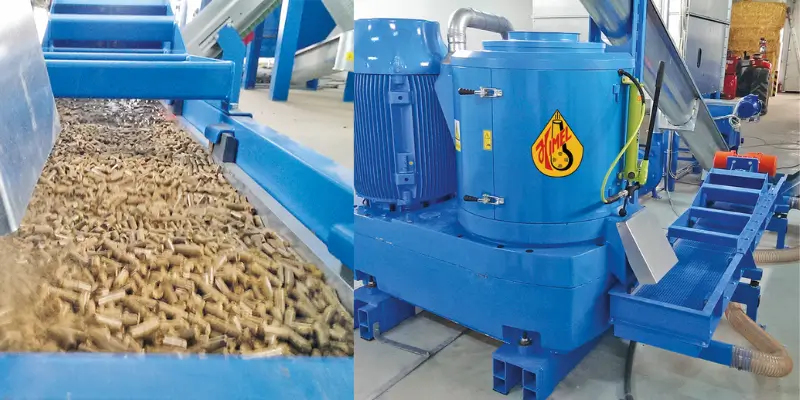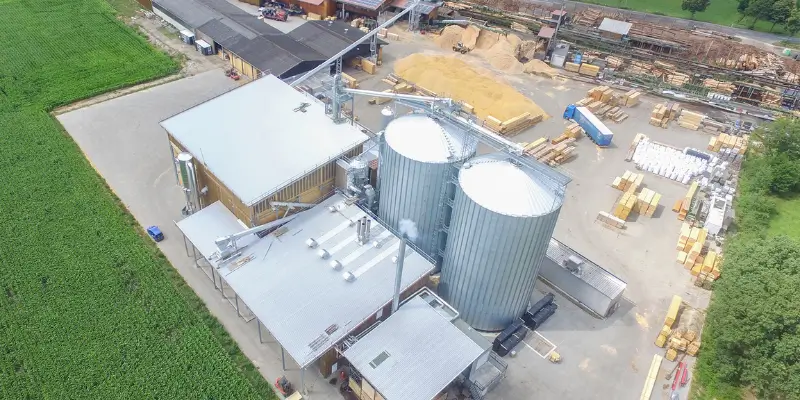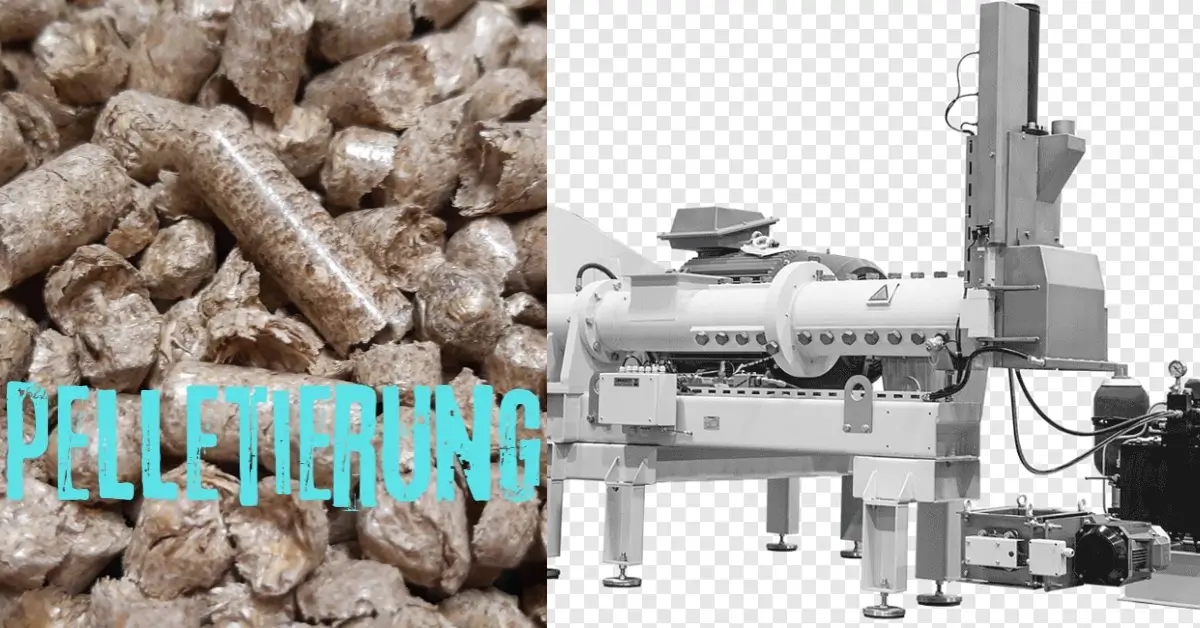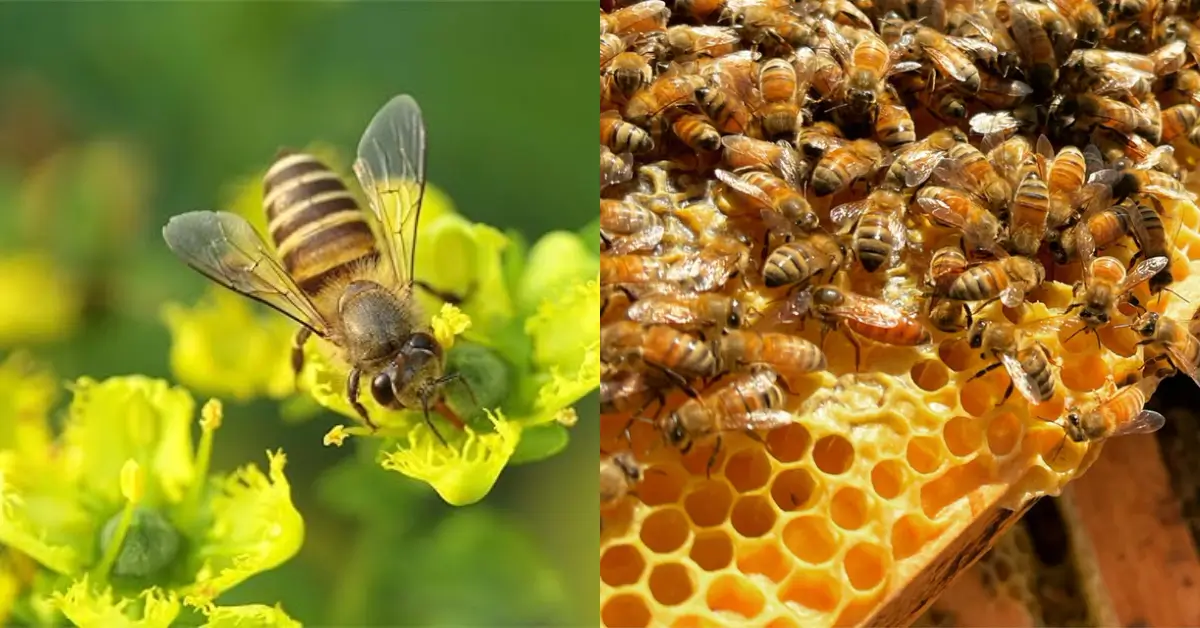Pelletizing, or “pelletierung,” has revolutionized industries worldwide by transforming raw materials into small, uniform pellets.
This versatile process is key to enhancing production efficiency, sustainability, and product quality across agriculture, energy, pharmaceuticals, and more. With its broad applications and undeniable benefits, pelletizing has become indispensable to modern industries.
What Is Pelletizing? An Overview of the Process
Pelletizing is the process of compressing or molding raw materials into cylindrical or spherical pellets. This transformation improves material handling, storage, and utilization. Using specialized pelletizing equipment, raw materials like biomass, iron ore, and polymers are processed to achieve uniformity and quality.
This process typically involves mixing the raw material with binders, shaping it using equipment like disk pelletizers or extrusion machines, and hardening the pellets through drying or cooling. Pelletizing is valued for its ability to convert waste into valuable products, making it a cornerstone of circular economies.

Applications of Pelletizing Across Various Industries
Pelletizing is a versatile technology with applications spanning multiple sectors. Agricultural feed, steel production, and renewable energy are just a few examples where pelletizing plays a critical role.
From producing durable feed pellets for livestock to creating efficient biomass pellets for energy generation, the possibilities are endless. Additionally, industries like pharmaceuticals rely on controlled-release pellets for precise drug delivery, while mining benefits from processing iron ore into transportable pellets.
Read Also: Justin Timberlake Toxicology Case
The Role of Pelletizing in Agriculture and Animal Feed
In agriculture, pelletizing is instrumental in creating nutrient-rich feed for animals. The process binds powdered ingredients into compact pellets, enhancing durability and reducing waste. The resulting feed pellets are easier to handle, store, and distribute, ensuring consistent nutrition for livestock.
Moreover, pelletized feed minimizes spoilage and improves digestion in animals, leading to healthier livestock and better yields for farmers. The precision offered by pellet mills also allows the incorporation of specific nutrients, catering to the dietary needs of various animals.
Biomass Pelletizing: Transforming Waste Into Renewable Energy
Biomass pelletizing converts organic waste, such as wood chips, straw, and agricultural residues, into biomass pellets. These pellets serve as a sustainable energy source, offering an eco-friendly alternative to fossil fuels.
The compact size and high energy density of biomass pellets make them easy to transport and store. As governments worldwide push for renewable energy adoption, the demand for biomass pelletizing continues to grow, paving the way for a cleaner future.
Pharmaceutical Pelletizing for Controlled-Release Medications
The pharmaceutical industry leverages pelletizing to create controlled-release pellets that improve drug delivery. By precisely controlling pellet size and coating, manufacturers can ensure a steady release of active ingredients over time.
This innovation not only enhances patient compliance but also improves the effectiveness of medications. Pelletized drugs are often used in treatments requiring precise dosing, highlighting the importance of pelletizing technology in healthcare.
Pelletizing in Steel and Mining: From Iron Ore to Pellets
In the steel industry, pelletizing transforms iron ore fines into durable pellets suitable for blast furnaces. This process involves agglomerating iron ore with binders and additives to create pellets that can withstand transportation and high temperatures.
The result is improved efficiency in steel production and reduced environmental impact. Iron ore pelletizing also addresses the challenge of handling fine ores, making it a critical step in modern steel manufacturing.
Pelletizing in the Chemical and Plastic Industries
Pelletizing plays a significant role in the chemical and plastic industries, where raw materials like polymers are shaped into pellets for further processing. These pellets ensure consistency and uniformity in the final products, whether they are plastics, resins, or adhesives.
The use of pellet machines in these industries streamlines production, reduces material waste, and enhances product quality, showcasing the adaptability of pelletizing technology.
Advantages of Pelletizing for Modern Industries
The benefits of pelletizing are vast and impactful. It improves material handling, reduces waste, and enhances product quality, making it an invaluable tool for diverse industries.
By converting waste into usable products, pelletizing supports sustainable practices. Additionally, the uniformity achieved through the process ensures efficient usage and better performance in end applications, from energy production to pharmaceuticals.
Exploring the Most Common Pelletizing Techniques
Several techniques are employed in pelletizing, including extrusion pelletizing, disk pelletizing, and roller pressing. Each method offers unique advantages depending on the material and desired pellet characteristics.
- Extrusion Pelletizing: Ideal for uniform pellet production, especially in pharmaceuticals and plastics.
- Disk Pelletizing: Suitable for spherical pellets, commonly used in mining and steel industries.
Understanding these methods helps manufacturers choose the best approach for their needs, optimizing efficiency and output.
Sustainability Benefits of Pelletizing Waste Materials
Pelletizing contributes significantly to sustainability by turning waste into valuable products. For example, biomass pelletizing repurposes agricultural residues into renewable energy sources, reducing landfill waste and carbon emissions.
This circular approach aligns with global efforts to combat climate change, making pelletizing a crucial technology for a greener future. Industries adopting pelletizing processes are better positioned to meet environmental regulations and consumer expectations.
Innovative Pelletizing Equipment and Technologies
Advancements in pelletizing equipment have revolutionized the process, improving efficiency, precision, and scalability. Modern pellet mills and disk pelletizers incorporate automation and advanced control systems to deliver consistent results.
These innovations enable industries to produce high-quality pellets while minimizing energy consumption and operational costs. Continuous R&D ensures that pelletizing technology keeps pace with evolving industry demands.
Challenges and Solutions in the Pelletizing Process
Despite its advantages, pelletizing comes with challenges, such as material variability, equipment maintenance, and energy consumption. Addressing these issues requires a combination of technological innovation and process optimization.
By investing in advanced pellet machines and adopting best practices, manufacturers can overcome these hurdles. Collaboration with experts ensures that processes are fine-tuned for maximum efficiency and reliability.
How Pelletizing Enhances Product Uniformity and Quality
One of the standout advantages of pelletizing is its ability to ensure product uniformity. By standardizing pellet size and shape, the process enhances the quality and performance of the final product.
This uniformity is critical in industries like pharmaceuticals, where precise dosing is essential, and in agriculture, where consistent feed quality impacts livestock health. Pelletizing is synonymous with reliability and excellence.

Future Trends and Innovations in Pelletizing Technology
The future of pelletizing lies in automation, AI integration, and sustainable practices. Smart pelletizing equipment equipped with sensors and machine learning capabilities can optimize processes in real-time.
As industries prioritize sustainability, innovations like biodegradable pellets and energy-efficient machinery will redefine pelletizing. These advancements promise a bright future for this essential technology.
Read Also: Abraham Quirós Villalba
Final Thoughts
Pelletizing, or pelletierung, is a transformative process that impacts industries worldwide. From improving sustainability to enhancing product quality, its benefits are undeniable. As technology evolves, pelletizing will continue to play a pivotal role in shaping a sustainable and efficient future.
FAQs
What is pelletizing used for?
Pelletizing is used to compress raw materials into uniform pellets for applications in agriculture, energy, pharmaceuticals, and manufacturing.
How does pelletizing benefit industries?
Pelletizing enhances product quality, reduces waste, and improves material handling and storage.
What materials can be pelletized?
Materials like biomass, iron ore, polymers, and agricultural feed can be pelletized.
What are common pelletizing techniques?
Extrusion, disk pelletizing, and roller pressing are widely used methods.
How does pelletizing contribute to sustainability?
By converting waste into valuable products, pelletizing supports eco-friendly practices and reduces environmental impact.Let me know if further refinements are needed!





